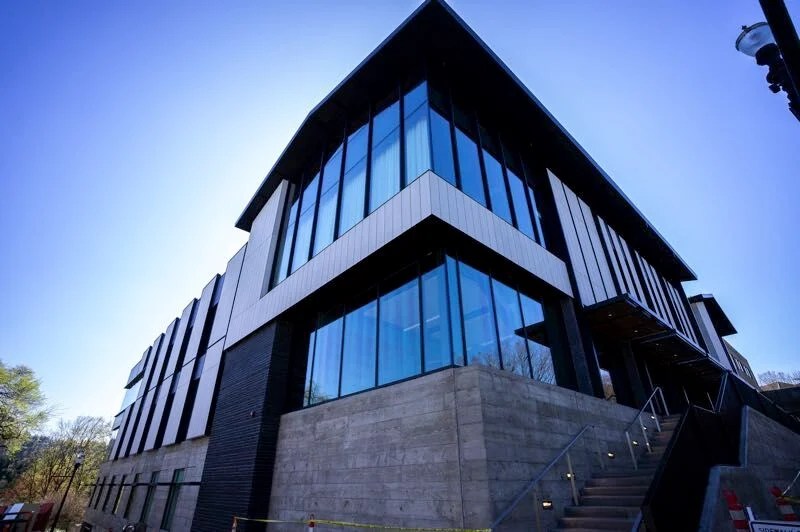How is Lake Oswego doing in implementing diversity goals?
Published 2:57 pm Thursday, June 12, 2025

- Lake Oswego City Hall is pictured here. (Staff file photo)
Five years have elapsed since the city of Lake Oswego’s DEI Task Force forwarded a list of recommendations for the local government to better serve all members of the community.
Since then, the city has moved forward with many initiatives, while work remains to fulfill some aspects of the report.
City councilors said they were pleased with the local government’s progress during a meeting in early June, while some community members felt there was important work left to be done.
Trending
“I appreciate that city staff and council are committed to doing work on diversity equity and inclusion in our community. I think we still have a lot of progress that can be made, but having this set of recommendations be pursued and fully analyzed is a great start,” said Peren Tiemann, a DEI Advisory Board member who spoke as a citizen and not on behalf of the board in an interview with the Review.
What has the city done?
The city has made many changes to become more inclusive.
These include:
- Adding a host of cultural events that provide an opportunity for diverse groups to feel celebrated and seen, like the upcoming Juneteenth celebration and the recent Native Hawaiian Pacific Islander Heritage Month celebration
- establishing the permanent DEI Advisory Board
- hiring an equity program manager
- introducing more trainings for employees on things like equity and sustainability
- altering hiring practices to make sure the city is reaching out to more culturally specific networks and mandating bias trainings for panelists involved with hiring processes
- adding access to translated documents for public meetings
- conducting “intentional relationship building” with organizations like Respond to Racism and LO for LOve
- creating an onboarding program for new employees to improve integration
- Hiring an ADA coordinator to help the city track its progress in building out more accessible infrastructure (as required by the state)
- Adding youth representation to the majority of city boards
- According to the staff report, the city has also progressed in terms of enhancing workforce diversity (although it didn’t provide specific data).
Lake Oswego Mayor Joe Buck noted that the city began its focus on DEI prior to it becoming a universally known term that has been derided by some.
“To see what (the city’s work) has become is really quite phenomenal,” he said.
Trending
City Councilor and DEI Advisory Board liaison Massene Mboup echoed those thoughts, saying that although there is more work to be done Lake Oswego should be proud of the work it has accomplished.
Tiemann felt that the expansion of adding youth to local boards was one of the city’s biggest accomplishments.
“I believe the city is taking remarkable steps to ensure that DEI work is valued in a time where across the country it is being pushed aside in many communities,” Tiemann said. “I believe every community can do more to support inclusion and diversity and bring in all kinds of people in our community and make it a better place for everyone.”
Room for improvement
In its report, the city touted the relationships it has forged with local community organizations. However, the president of one of those organizations, Respond to Racism, was not as enthused about the collaboration.
Bruce Poinsette said it felt like the work the city has completed like the community celebrations are a shield from tackling some of the thornier issues when it comes to embracing and boosting multiculturalism. And though he said the city and his group’s goals often align, collaboration can sometimes feel frustrating and limited.
Some things he would like to see that the city has not made progress on include adding a multicultural space for diverse residents to feel safe and collaborate, as well as education on microaggressions, which he said remain pervasive in Lake Oswego. He also would like to see the city better make BIPOC employees feel included and, in turn, retain them. Poinsette said Respond to Racism has a positive working relationship with the library but not other departments.
“They (the city) have a platform, a wider reach in terms of the community, and when we say that we are committed to trying to educate people about these issues when we do outreach and be responsive to the community, it feels like there is always something for why we can’t do this deeper work,” Poinsette said.
The multicultural center was one of the DEI Task Force’s recommendations and the city looked into such a center being woven into a broader community center that could also house parks and recreation programming and a library. The city looked at the Lake Grove Elementary School site, but that effort did not materialize.
Tiemann noted that most local boards include only white members and said the city has considerable work left to do to diversify them.
“And I think the city of Lake Oswego can do much more to acknowledge and rectify the historical harms that have been done, especially to people of color in our community, and make sure we are more inclusive moving forward,” Tiemann added.
At the meeting, Councilor John Wendland said he would like more statistics in terms of how the city staff’s makeup has changed since it has altered its hiring policies. Tiemann echoed that point.
Still, Wendland said: “I feel they (city leadership) have truly embraced the goals we are doing and have consciously been hiring differently and working differently in how we are retaining people.”
Some of the other initiatives the city has not completed that were in the initial 2020 report include:
- Establishing a volunteer multilingual program to assist community members
- Collecting data on employees’ perceptions on topics including DEI
- Conducting an equity audit and environmental scan of all city departments
- Establishing a leadership academy (the city is concerned this would negatively impact the Lake Oswego Chamber of Commerce’s Leadership Lake Oswego Program)







